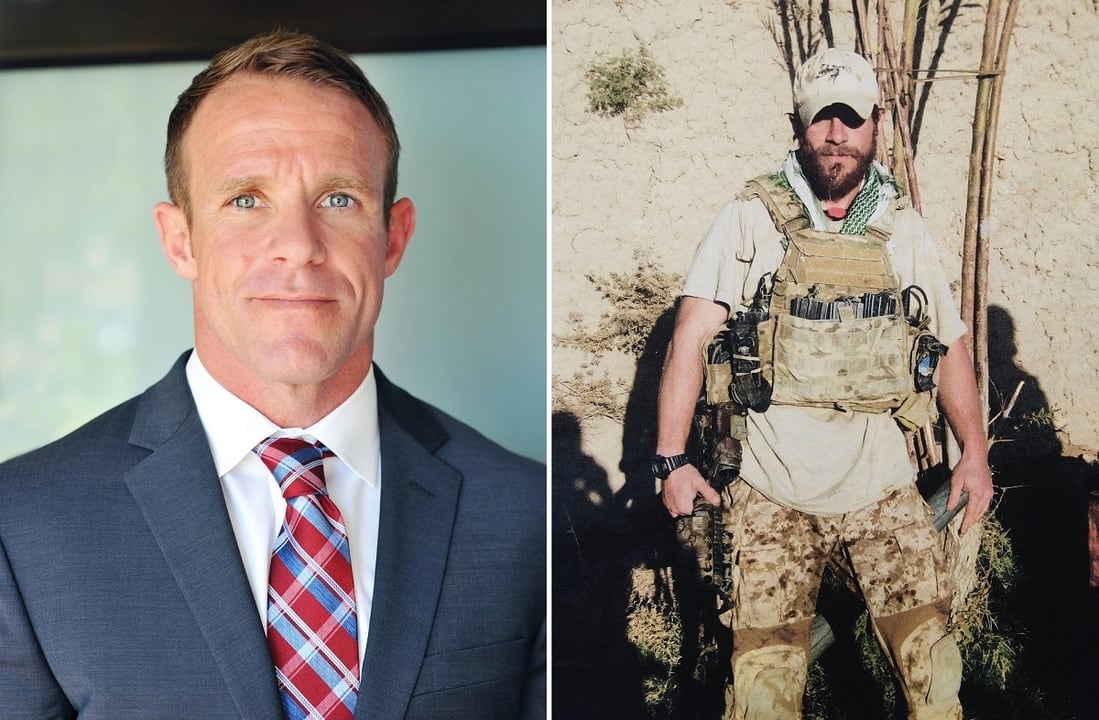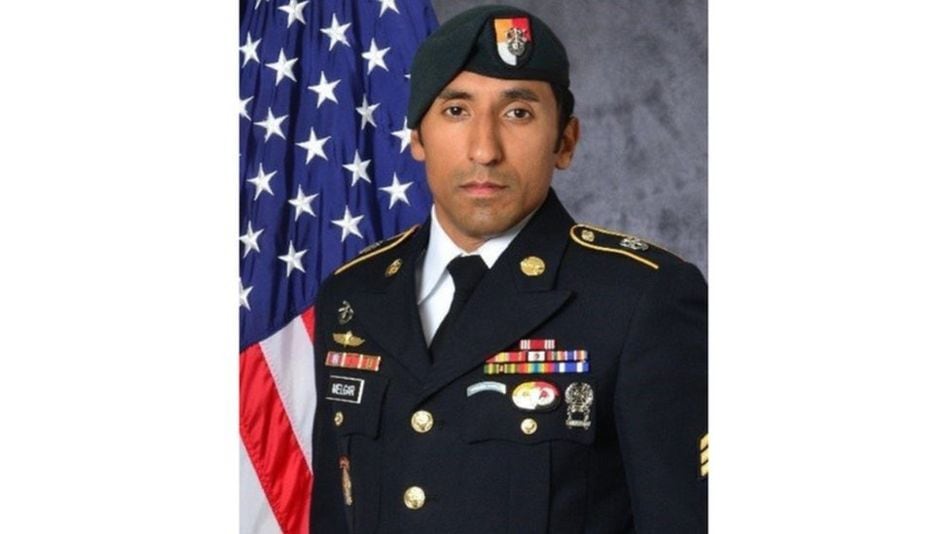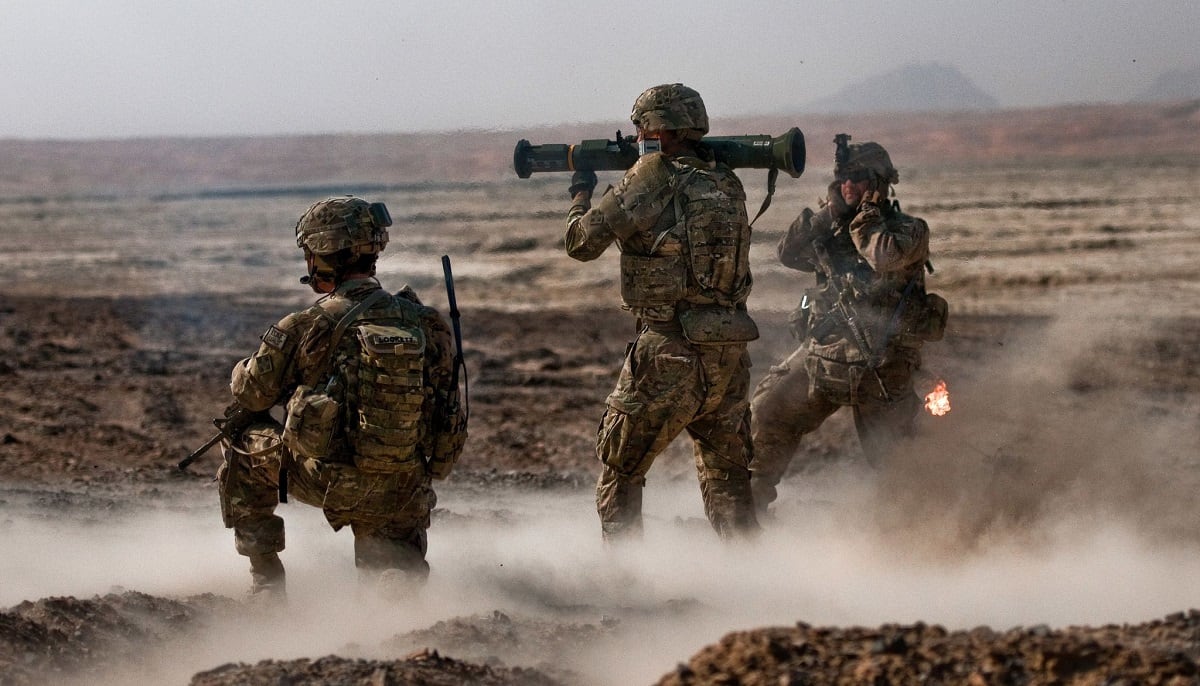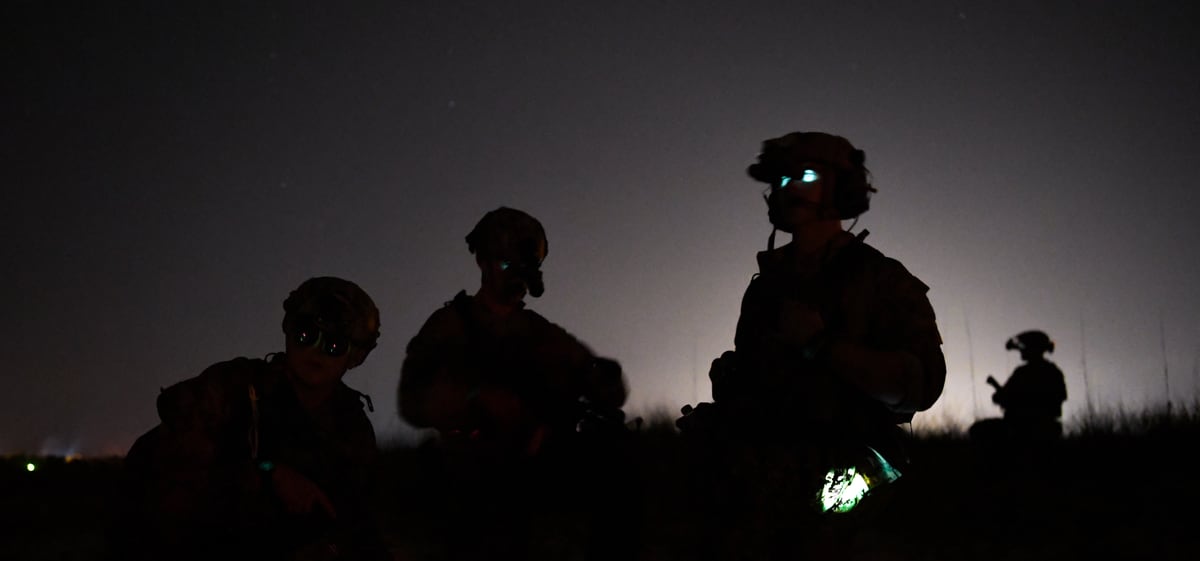NAVAL BASE SAN DIEGO, Calif. – As military prosecutors tell it, Chief Special Warfare Operator Edward “Eddie” Gallagher is a callous murderer who stabbed to death a wounded Islamic State prisoner of war, gunned unwitting civilians with his sniper rifle, bragged about racking up kills and threatened to intimidate and publicly out SEAL buddies who complained to superiors and investigators about him.
But during two days of testimony in his Article 32 hearing here, Gallagher’s criminal defense attorneys painted a different picture of the highly-decorated SEAL, describing him as a battle-hardened hospital corpsman who properly treated a gravely-wounded ISIS fighter, only to have his reputation smeared by a handful of spiteful SEAL malcontents in the 19-man platoon who griped about his gruff leadership style.
Gallagher, a veteran of eight overseas and combat deployments, is facing 14 criminal counts, including premeditated murder for allegedly stabbing to death an alleged ISIS fighter Iraqi forces brought for medical care by his SEAL Team platoon in Mosul, Iraq, in early May 2017.
The married father and 19-year veteran of the Navy has been confined at the Naval Consolidated Brig Miramar in San Diego since his arrest on Sept. 11 at Camp Pendleton, where he was receiving treatment as a wounded warrior.
He faces 14 criminal counts, including murder, aggravated assault, obstructing justice and drug charges tied to alleged pain reliever and anabolic steroid abuse.
By Nov. 30, Navy Capt. Warren Record, a military judge assigned as the hearing officer, will submit to Naval Special Warfare Group 1′s commodore, Capt. Matthew D. Rosenbloom, his recommendations on which charges — if any — should be lodged against Gallagher.
Rosenbloom, as the initial convening authority, authorized the initial charges against Gallagher and slapped a gag order on all participants in the legal procedures that controlled how they used evidence and discussed with the public the ongoing probe.
He will decide whether charges should be dropped, revised, handled non-judicially or heard at a court-martial.
Gallagher is one of only two SEALs with Alpha Platoon charged so far in connection with the ISIS fighter’s death. The other is Lt. Jacob “Jake” Portier, who wasn’t with Gallagher when the man was killed but is accused of failing to report rumors of the chief’s alleged misconduct to superiors in his chain of command.
Portier has proclaimed his innocence and believes he will be exonerated as the person who brought the war crimes allegations to superiors.
Only one person took the stand to testify at Gallagher’s hearing, Naval Criminal Investigative Service Special Agent Joe Warpinski.
Defense attorneys sought to cross-examine more than a half-dozen active-duty SEALs and a retired special operator only to be told they were not available or had invoked their rights against self-incrimination, presumably to get ahead of any potential charges stemming from the investigation.
RELATED

Those include at least three SEALs who had reported or relayed their concerns repeatedly about Gallagher’s allegedly erratic behavior and battlefield tactics to superiors, plus a SEAL master chief who allegedly was told about concerns about Gallagher’s actions, conduct and leadership over the course of the deployment to Iraq, according to prosecutors.
Prosecutors successfully argued that their testimony would merely duplicate what Warpinski said in court and their videotaped and sworn statements already have been entered as evidence.
That evidence included videos apparently posted on YouTube, a helmet-camera video of the wounded fighter and SEALs in the Mosul house, footage of Gallagher’s re-enlistment ceremony done over the dead fighter and “deer kill” photographs of Gallagher, flashing a knife, and with several SEALs posing with the body.
Although provided a trove of evidence from the investigation, Navy Times has declined to publish the names of the SEALs who have sworn statements out against Gallagher; those who have invoked the right to silence; and will not publish or even describe in graphic detail the images from Mosul to protect the safety of the personnel and their families.
But closing arguments on Thursday were a bitter footnote to an already grim day for the reputation of the Navy’s elite commando units.
On the other side of the country in Norfolk, Navy Region Mid-Atlantic prosecutors were charging two Navy SEALs and two Marine Raiders with felony murder, involuntary manslaughter, conspiracy, obstruction of justice, hazing and burglary in the June 2017 strangulation death of Army Special Forces Staff Sgt. Logan Melgar.
RELATED

In his closing arguments in San Diego, lead prosecutor Cmdr. Christopher Czaplak said that "SEAL Team Platoon Alpha signed up to protect America,” but Gallagher instead “handed ISIS a propaganda manna from heaven.”
Czaplak described the SEAL chief as quick to brag “about having more kills than Chris Kyle,” the late SEAL sniper, and being a stern disciplinarian. That includes a time, he said, when Gallagher allegedly forced a platoon SEAL to fire a Carl Gustav rocket launcher nearly a dozen times within a 24-hour period.
Medical researchers have become increasingly concerned about the anti-armor weapon potentially causing traumatic brain injuries to those firing it.
RELATED

Czaplak urged Capt. Record to consider a raft of new charges Rosenbloom didn’t levy against Gallagher.
The prosecution added four possible specifications for attempted murder, assault and maltreatment.
The attempted murder charges stem from two purported incidents where Gallagher, manning a sniper rifle atop one of two battle-scarred towers in Mosul, fired the weapon at an elderly man and also at a group of four young women.
It’s unclear what happened to them, although one SEAL told investigators that he was with Gallagher in the tower on June 18, 2017 — Father’s Day — when he saw the elderly man topple, according to Warpinski.
In the second alleged incident, Gallagher and another SEAL were in the tower when they spotted the girls strolling down a path along the Tigris River, the special agent testified.
That echoed accusations other SEALs apparently made that Gallagher repeatedly fired his weapons, even into crowds, during the platoon’s 2017 deployment.
But several SEALs relayed that the chief often missed, due in part to a poorly-maintained rifle, and they stopped short of telling Gallagher because he wasn’t striking his targets because they "thought it was one way to protect” the civilians, Warpinski added.
“They were not OK with his actions,” he said, but they didn’t initially tell superiors about Gallagher’s alleged misconduct.
To Gallagher’s legal team, these allegations are fictional.
Phil Stackhouse, one of three civilian attorneys defending the chief, denied that Gallagher murdered the fighter, a man he said appeared to be having breathing problems.
Stackhouse criticized “the pittance of evidence that’s required to go forward” to justify probable cause at an Article 32 hearing and speared at inconsistencies in statements NCIS investigators recorded from Gallagher’s SEALs and several of their superiors long after the platoon returned home from Iraq.
Stackhouse pointed to what he believes are the impure motives of Gallagher’s accusers, alleging that several SEALs were disgruntled at Gallagher for pulling them back to a “rest and reset” house and for calling them “pussies” and “cowards” for what the chief perceived to be lackluster fighting.
Gallagher “was angry at them because they weren’t fighting as aggressively,” Stackhouse said, so “he took them out of the fight.”
Gallagher, dressed in his dress blue uniform, with his gold Trident insignia glinting above several rows of ribbons, sat at a table surrounded by his defense team, flanked by brig chasers and with several supporters seated nearby.
“The overwhelming support that he has received from his friends and colleagues is very uplifting to him,” Stackhouse said after the hearing, “and the sense of betrayal that he feels by these (accusing) SEALs is crushing.”
RELATED

Gallagher’s arrest and charges stem from the NCIS investigation that began in April, according to Warpinski, a special agent assigned to the agency’s San Diego Field Office.
Warpinski said that investigators continue working to reconcile apparent discrepancies in several of the SEALs' statement. None of their statements have been converted into transcripts and agents delayed travel to Mosul for several months due to security concerns there, he added.
To defense attorneys, those discrepancies loom large, including disagreements over when the ISIS fighter is alleged to have been stabbed to death.
Several SEALs apparently disputed the date when an Iraqi emergency response team brought the detainee from a military vehicle to their Mosul house, Warpinski said.
An Iraqi general was there at the time, along with a journalist embedded with the Iraqi unit, he said.
Several SEALs told investigators that Gallagher had asked if the fighter was Iraqi. When told he was ISIS, Gallagher said “nobody touch him, he’s mine,” Warpinski said. Inside, SEAL medics began to render aid and Gallagher stooped over the ISIS fighter and began slicing through the pants.
Portions of the scene were digitally recorded but what happened next is highly disputed.
Prosecutors say that Gallagher stabbed the ISIS fighter in the lower neck and chest, wounds that killed him, citing testimony from at least two SEALs.
One SEAL told investigators he “was in complete disbelief” and kept monitoring the young man “until the individual stopped breathing.” Another SEAL, a chief, told investigators that “he couldn’t believe what had happened.”
Soon after, Warpinski said, Gallagher posed with the now-dead fighter, holding up a personally-owned knife in one hand and the young man’s head in the other. He also mugged next to the body during a re-enlistment ceremony captured in the footage, Warpinski said.
Warpinski said another SEAL in the platoon confronted Gallagher about his actions in the house and the chief replied that “I was working on him and he just died,”
NCIS agents recovered a knife from Gallagher — they had also searched his operator cage as well as his office space and home — but it’s unclear yet if it’s the same knife allegedly used that day, and a lab investigation isn’t finished, prosecutors said.
RELATED

“This is not a case about SOC Gallagher killing an ISIS prisoner,” said prosecutor Czaplak. "This is a case about SOC Gallagher killing a prisoner whose wounds were being treated by his fellow SEALs. This is a case about SOC Gallagher shooting an old man on a street corner. This is a case about SOC Gallagher firing indiscriminately into a crowd of civilians, at women across a river, and it is a case about SOC Gallagher shooting a little girl who was running away from ISIS.
"But this isn’t just a case about SOC Gallagher’s war crimes. It’s a case about a platoon of SEALs having the courage and integrity to come forward and report it. And it’s a case about SOC Gallagher obstructing justice by trying to intimidate them.
"The service discrediting element is a hypothetical so ask yourself this: does the public still have faith in the Navy SEALs after SOC Gallagher decided to kill civilians so he could beat Chris Kyle’s body count? Does the public still hold the United States Navy in high esteem after SOC Gallagher tried to kill a little girl on a bridge? Does the public still believe we are the good guys because SOC Gallagher decided to act like the monster the terrorists accuse us of being?
“If the public still has faith, it’s because it’s because of the SEALs who spoke up, not because of him,” Czaplak said.
Defense attorneys blasted those claims, contending that Gallagher was rendering proper medical care to the ISIS fighter despite severe blood and fluid loss from shrapnel wounds and blast injury to his lower body, plus an emergency “crike” incision — or cricothyroidotomy — a medic had performed to help the man breathe.
“There’s no evidence of stab wounds on him,” Stackhouse told the court.
Inside the tiny courtroom, Stackhouse told Record that the SEALs who implicated Gallagher could have reported their allegations to superiors much earlier, including when several senior leaders visited the platoon in Iraq that summer.
“They didn’t disclose it, and they have to answer that question why,” he said.
Stackhouse denied any wrongdoing by Gallagher. He dismissed the alleged charges of wrongful drug use, noting that Gallagher has long held a prescription for the pain reliever Tramadol. The steroids investigators found during a search of his home were part of an issued medical kit, he added.
Gallagher has remained imprisoned in the brig despite at least three requests, all ignored, to reconsider his confinement, his attorneys said.
And whatever Record recommends to Group 1′s Rosenbloom, Gallagher likely is destined for a general court-martial convened at Navy Region Southwest, the chief’s defense attorneys said.
“It’s important for him to get out of the brig to prepare for his case,” Stackhouse said.
The opening of the trial early Wednesday was marred by complaints of insufficient access for the public, mostly Gallagher supporters. They were barred entry to the courtroom due to a lack of space.
Joni Marquez, an Air Force veteran who had come to show her support for Gallagher and his family, told Navy Times that she was “disappointed that they didn’t seem to plan for this,” leaving — by her count — at least 35 people outside the courtroom.





